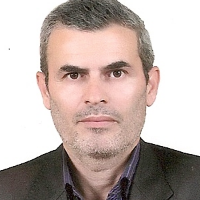200and governmental hospitals in Sari by survival analysis technique during 20057
Author(s):
Abstract:
Background and
Purpose
Many children younger than 1 year old (about 4/000/000) are dying annually around the world, that three quarters of this mortality is related to neonatal period (4 weeks after birth). Several factors such as environmental conditions, social and genetic factors are causes of decreasing neonatal mortality. The aim of this study was to determine the neonatal survival rate and its related causes in NICU of private and governmental hospitals in Sari. Materials And Methods
This survival analysis was a descriptive study of 500 neonates who were admitted into NICU of private and governmental hospitals (Booali Sina, Nimeyeh Shaban, Amir-Mazandarani, and ShafaHospitals) in Sari during 2005 to 2007. Data was gathered by using Self-making Informational Form (validity and availability was confirmed by content validity and α- kronbach). Information were obtained by interview with mothers, study of patient's chart, observation of the neonates, or phone interviews, after being discharged from the hospital. Statistical analysis of data was done by using Kaplan-Mayer survival analysis technique, and survival tables. Furthermore, risk factors were determined by logistic regression. Results
Three-hundred twenty six neonates (65.2%) were the first rank of birth. Sixty-three mothers (12.6%) experienced previous neonatal mortality. 217 of mothers (43.4%) were illiterate and 85 (17%) had diplomas or higher education. 119 neonates (23.85) died within 28 days of life. There was a relationship between higher education level of mothers, polyhydraminous (over production of amniotic fluid according to sonography report), and delivery method, neonatal weight at birth, congenital anomalies, and neonatal survival rate. Eighty-seven expired neonates (73.1%) had birth weight lower than 2500gr, and 21 (16.8%) had gestational age lower than 36 weeks. The survival rate was higher among neonates within 21 and 22 days of life. The mortality rate among neonates with 2 to 3 days of life was higher than the other age group. Conclusion
We have not achieved adequate success in comparison with other developed countries in the improvement of neonatal survival rate during low gestational age. On the other hand, the physical and cognitive abilities of neonates were not evaluated in this study. We recommend further studies with more samples for assessment regarding survival rate of the neonates without disability.Keywords:
Language:
Persian
Published:
Journal of Mazandaran University of Medical Sciences, Volume:17 Issue: 62, 2008
Pages:
54 to 62
magiran.com/p514789
دانلود و مطالعه متن این مقاله با یکی از روشهای زیر امکان پذیر است:
اشتراک شخصی
با عضویت و پرداخت آنلاین حق اشتراک یکساله به مبلغ 1,390,000ريال میتوانید 70 عنوان مطلب دانلود کنید!
اشتراک سازمانی
به کتابخانه دانشگاه یا محل کار خود پیشنهاد کنید تا اشتراک سازمانی این پایگاه را برای دسترسی نامحدود همه کاربران به متن مطالب تهیه نمایند!
توجه!
- حق عضویت دریافتی صرف حمایت از نشریات عضو و نگهداری، تکمیل و توسعه مگیران میشود.
- پرداخت حق اشتراک و دانلود مقالات اجازه بازنشر آن در سایر رسانههای چاپی و دیجیتال را به کاربر نمیدهد.
In order to view content subscription is required
Personal subscription
Subscribe magiran.com for 70 € euros via PayPal and download 70 articles during a year.
Organization subscription
Please contact us to subscribe your university or library for unlimited access!


